The Legend, Bob Marley
Bob Marley, the man, the music, the myth, the legend! However, the one question that people continue to ask is “How did Bob Marley Die?” The Honorable Robert Nesta Marley, OM (Order of Merit) was an International Reggae Artist and songwriter. He was an accomplished musician who died way too early. Bob Marley died on May 11, 1981, at the ripe young age of 36. In 2004, twenty-three (23) years after his passing, Bob Marley was ranked eleventh on the list of “The 100 Greatest Artist of All Time by Rolling Stone Magazine.” Bob’s life story reflects the incredible journey he traveled. He was using a powerful message in his music. That was Bob’s vehicle to reach the world and inspire people everywhere. Since Bob Marley’s death, more than thirty-four years ago, his image continues to grow in popularity and so has his music.
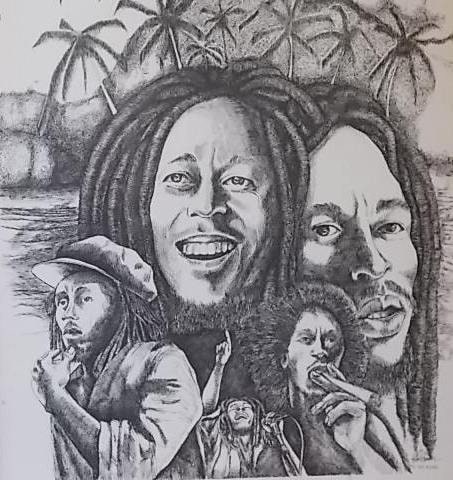
Favorite Son
Jamaica’s favorite Son Bob Marley is now the pride and joy of his island in the sun, his home Jamaica. Today, one of his title songs “One Love” is a beloved saying among Jamaicans and around the world. The song is also used as the anthem of The Jamaica Tourist Board promotional video. The song “represents hope, and how life ought to be – a magical fantasy for Jamaica and the rest of the world. Bob was hopeful that there would come a day when, the race would be insignificant, and humanity would transcend all. A time when we can all say, “All things bright and beautiful, all creatures great and small… the Lord God, “Jah” made us all”.
The Love/ Hate Relationship
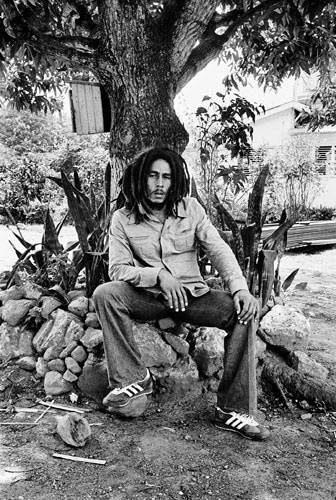
Bob Marley, Home Kingston ‘JA. Member of “The Twelve Tribe of Israel. Pic. By Dennis Morris
There was always a love-hate relationship when it came to Bob Marley and his fellow Jamaicans. This relationship transcends with both the high-society Jamaicans and the everyday Jamaicans. His Rastafarian Religion, culture, and way of life – long dreads, weed/ganja smoking habits – was not widely embraced. The Rastafarian lifestyle was relatively new to the island on a wide scale and many Jamaicans resisted the non-Christian religion. Bob was viewed more as Jamaica’s prodigal son or the uncontrolled son.
They say with time comes healing. The message and the music were powerful. The message had a soothing effect. He appealed to the poor, the sufferers, as they were called, particularly those in Trench Town where Bob lived. They had a passionate love affair with him. His music inspired many and gave them hope, gave them a reason to “Get up stand up”, stand up for their rights as the lyrics states. Soon Jamaicans, like the rest of the world echoed the message loud and clear. As Bob Marley once said during an interview, “My life is only important if mi caan (I can) help plenty people.”
Robert Nesta Marley’s Music
Decades later, Bob’s music continues to help millions of people around the world. The message in Bob Marley’s music goes right to the heart and soul of not just Jamaicans but millions around the globe. Bob’s deep mystical fate as a Rastaman was what drove Bob to speak out against oppression. As Bob said, “Mi noh deh pon noh body side, mi noh deh pon the black mon side nor deh white mon side, mi deh pon God side (I’m not taking sides, I’m not on the black man nor the white man side. I’m on God side.) Even after Bob’s untimely death, his music continues to be inspirational to people of all color.
Bob Marley was the pioneer of reggae music. Many considered him a prophet because the message in his songs was so powerful; it seems that Bob could see the future. Bob lived at a time when people around the world needed some uplifting to deal with the troubles they faced such as racial division, oppression, inequality, tough economic times and more.

Bob Marley in London around 1980 playing “Redemption Song”. Pic. By Dennis Morris
Looking back at Bob Marley’s accomplishment
When you look back at Bob Marley’s accomplishment we can all agree that his time was the right time. His voice became the voice of the everyday man and woman. He was indeed their strong voice. The world needed a voice of reasons to unite the people. Gone were some powerful advocates and Civil Rights leaders such as Marcus Garvey, (53), El-Hajj Malik el-Shabazz (Malcolm X) (40), and Dr. Martin Luther King Jr. (39).
Ironically, they all died young, and Nelson Mandela of South Africa was imprisoned. These past leaders had a significant impact on the lives of millions of people around the world and Bob Marley and his music were helping to fill that void. What is coincidental about these past leaders and Bob Marley is that they all died after dedicating about 20 years of their lives to the people sharing the message of wisdom and providing hope.
oppression
Apartheid and oppression were strong in many African countries and other countries around the world. Bob Marley’s music gave millions of people the power and strength to fight and become liberated from mental and physical slavery. People connected his music with their lives, his words identified their struggles and his messages released them from captivity. Bob Marley lived a life that reflects that he was the master of his faith. His gift to the world was his primary purpose of spreading – “One Love” and down with Babylon (Oppressor) system.
The Early Life of Bob Marley
Robert Neasta Marley was born on February 6, 1945, in Nine Mile, St. Ann Jamaica. Bob was the son of Miss Cedella Malcolm and Mr. Norval Marley, also known as Captain Norval Marley. Cedella was a black Jamaican and his father was a white Englishman. Bob’s father played a minor role in his life. He grew up with his mother, Cedella in rural Jamaica. They later moved to Kingston at the age of 12, to Trench Town, a rough part of the inner city of Kingston, Concrete Jungle, as one of Bob Marley’s songs describes it.
While living in Trench Town, Bob met several singers and musicians but he connected with Neville Bunny Livingston and Peter Tosh. Together, the three men formed a group “The Wailers.” It was during that period Bob met Rita Anderson who later became his wife (Rita Marley). Over a period of time and after many hit songs, the group broke up. First Bunny Livingston left the group initially, followed by Peter Tosh to begin his solo career.
The Birth of Bob Marley and the Wailers

Bob Marley the man, “King of Reggae”
The group split created the perfect opportunity for the birth of Bob’s solo career with the Wailers. The group included three female background vocals called “I-Three” The ladies in the group included Jamaica’s Queen of Reggae Music Marcia Griffiths, Rita Marley and Judith Mowatt. They were affectionately Bob Marley’s “Three Little Birds” as he sang in one of his many hit songs.
At first, the group faced some hard economic challenges playing to small audiences in small venues but Bob never gave up because he always believed “what is to be will be.” Although he came from humble beginnings, he went on to achieve international fame and success as the “King of Reggae.”
His audiences grew
As Bob Marley continued touring, his audiences grew to the point that it was reported in a France News Paper that during his 1980 “Uprising Tour”, Bob Marley attracted a bigger audience than Pope John Paul II who was at the same venue a week earlier*. After more than 34 years since his death, the King of Reggae, the icon Bob Marley and his message remains a big part of our lives. The unanswered question seems to remain – How did Bob Marley Die?
His Big Toe Injury and Melanoma Cancer
His problems started in 1977 while playing a game of football (Soccer), in France. He loved football and used this as a form of hobby. During this particular football game, a player stepped on Bob’s right foot, causing an injury to his big toe. Bob Marley ignored the injured big toe for a while until it became infected. Eventually, a doctor in Miami examined the toe and diagnosed Bob with melanoma (skin cancer). The physician recommended the amputation of the big toe. Bob refused and consulted with his Rastafarian physician, Dr. Carlton “Pee-Wee” Fraser. He prescribed and hoped Bob could be cured with herbal remedies.
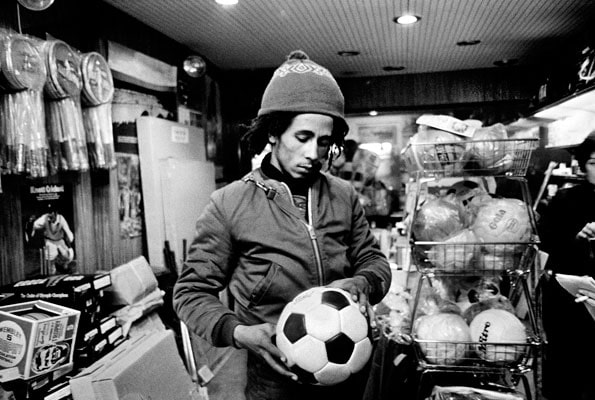
Bob Marley in London shopping for the kids in Trench Town, Kingston
by Dennis Morris
Over a period of time and herbal treatments, Bob realized that the toe was not healing and the cancer was not going away. He later agreed to remove the nail bed of his big toe. He did well after the operation and was back on his feet within eight months. Bob was back on the road touring and performing and his fan base grew.
Becoming larger than life
His presence was becoming larger than life. People of all races and cultures were captivated by his presence and the message of unity “One Love”. Bob always saw himself as an ordinary man but to the world, he was larger than life. His views on social issues, equality for all races as he sang in “Redemption Song” and his teachings, (Emancipate yourself from mental slavery, none but ourselves can free our mind) allowed Bob to enter into our hearts and touch our soul.
“Exodus” The Album
On the “Exodus” album with the track “War” (Until the color of a man skin is of no more significance than the color of his eyes), Bob was teaching what was required for world peace. The message in his music was reaching the massive and the King of Reggae Music, a musical genius, was realized. One could say that’s when Bob Marley “The Legend” was born. Over the years, people became both passionate and obsessed with Bob Marley and his music. The spiritual lyrics in Bob’s songs are just as powerful today and his vision of the future is emotional reminders of why his audience keeps growing more than thirty-four years after his death and brand keeps getting stronger.
Controversy

Choose Jamaica, home to Reggae International Superstar Bob Marley. Visit his birthplace in St. Ann and his Museum in New Kingston.
Controversy seems to always surround the death of a celebrity. Bob’s death had its share of controversy and conspiracy. It is human nature or as Bob Marley would say, “Movement of Jah (God) People”, to challenge the unknown and believe the unbelievable.
His Death
Life took a dramatic turn for the worse for Bob Marley. It all came in just two nights after a sold-out concert at Madison Square Garden in New York City in September of 1980. The morning after the concert, Bob and some of the band members and his tour manager all went jogging in Central Park. While jogging, it was reported that Bob collapsed and fell to the ground. He recovered but was taken to Memorial Sloan Kettering Cancer Center Hospital in Manhattan. He was examined by a doctor. The diagnosis was grave.
According to Danny Sims (From JAD Records and also Bob Marley’s manager and publisher from 1967 – 72 & 1979 – 1981), the doctor told him and Allen (Skill) Cole (He was a professional footballer and Bob’s friend; and also The Wailers manager) that “Bob had cancer all over his body.” Furthermore, the cancer had spread all over his body which includes his lungs and brain. The doctors went on to say, “They could not help him.”There was no treatment, whether chemotherapy, radiation or anything else that they are aware of that could cure him.
Bob was devastated
As stated by his manager Danny Sims, Bob was devastated when he heard the news like any human being would be. In Addition, the doctor suggested that based on the severity of cancer, Bob should just continue performing until his death. As it turned out his scheduled performance in Pittsburg, Pennsylvania was his last performance. At this point, Bob may have needed some alone time and decided not to ride on the tour bus with his group to Pittsburg. As anyone can imagine, all the members of the band were devastated when they heard the news. This made the ride even longer because it was so quiet on the bus.
Pittsburg Concert sold out
Bob Arrived in Pittsburg to a sold-out audience and gave them the best show he could. He returned to the stage twice as the crowd cried out for more. So Bob asked his friend Allen “Skill” Cole to “stay close just in case he fell out” during his performance. After the show, Bob returned to New York’s Memorial Sloan Kettering Cancer Center Hospital and started chemotherapy treatment. It was during that time the decision was made to cut off his dreadlocks. The hair would fallout anyway because it’s a known side effect on patients going through cancer treatment.
This was his signature locks and in line with the Rastafari tradition and culture. In doing so, Bob had his friend, Lee Jaffe, (former harmonica player with The Wailers from 1973 – 1975) to helped him to cut the remainder of his locks. Bob’s locks were his identity and his Rastafarian Religion. Although Bob’s Lion-Mane dreadlocks were destroyed as a result of cancer, he was not ready to give up the fight.

Bob Marley The Legend wax at Madame Tussauds in New York City.
Memorial Sloan Kettering Cancer Center
It was at Memorial Sloan Kettering Cancer Center Hospital where Bob Marley stayed until they could offer no further treatment. Bob last attempt at prolonging his life was to seek out the help of a German Holistic practitioner, the only known doctor on record to have cured a melanoma cancer patient is Dr. Josef Issels. Bob flew to Germany with his longtime friend and Artistic Director Neville Garrick, to seek treatment at the Rottach-Egern Bavaria clinic.
His parables (storytelling) played a major role in Bob Marley becoming famous. He had a way with words. One of his popular phrases was “If you are a big tree, I’m a small Ax, ready to chop you down.” He wielded his small ax, as he fought endlessly to level the playing field – giving a voice to the voiceless, hope to the hopeless and a path to freedom as recorded in “Redemption Song”. He was now facing a personal battle – a steep uphill battle against cancer and it was winning. Some may say that Bob Marley’s commitment to his Rastafarian Religion hastened his demise. Others may say this is how his story was meant to be. He came for a time and a season with a defined purpose.
Dr. Josef Issels in Germany
Now it was off to Germany where Bob was hoping to find a different result. He stayed there for a short time until Dr. Josef Issels and his team could no longer help him. After he returned from Germany, Bob flew back to Miami USA on May 8, 1981. Three days later Robert Nesta Marley died on May 11, 1981. The Jamaican Government honored Bob Marley with an official funeral from at the National Stadium. The people, showed up in vast numbers to pay their final respect to Jamaica’s Native Son.
The Legend, the icon, Bob Marley, came from humble beginnings, who went to bed hungry many nights, was able to fulfill his purpose. He lived to see his career blossom to international acclaim stardom. Over the years Robert Nesta Marley OM earned the title “King of Reggae”. The King of Reggae moved on to be with the ancestors after fulfilling an incredible musical journey.
Recognition and Awards
Awarded Peace Medal of the Third World, from the United Nation, 1978
Awarded Jamaica’s 3rd highest honor, Jamaican Order of Merit, 1981
Inducted into the Rock and Roll Hall of Fame, March 1994
Album of the Century for Exodus, by Time Magazine 1999, 38 years after the release
A Star on Hollywood Walk of Fame 2001
Grammy Lifetime Achievement Award, 2001
Ranked No. 11 by Rolling Stone 100 Greatest Artist of All Time, 2001
Song of the Millennium by BBC, “One Love”
One of the Greatest Lyricists of all time by a BBC poll
Inducted into the Grammy Hall of Fame “Catch A Fire” Reggae Album 2010
Reggae Month
Reggae Month is celebrated in February and was highly influenced by Bob Marley’s music. In Timothy White’s book, Catch a Fire, Bob was viewed as the “most charismatic emissary of modern Pan-Africanism” David Burnett, Time magazine photographer, was quoted about Bob Marley, “…one of the most beloved and respected international artists of our

Robert Nesta Marley Jamaican Icon and Legendary Reggae Superstar. _Three_Little_Birds album
time” He went on to say, “…Bob was happy to engage you. He was willing and giving…”

Bob-Marley-Series3-LandRover – Restored.

Bob Marley live at the Hammersmith Odeon in London around 1979.
By Dennis Morris
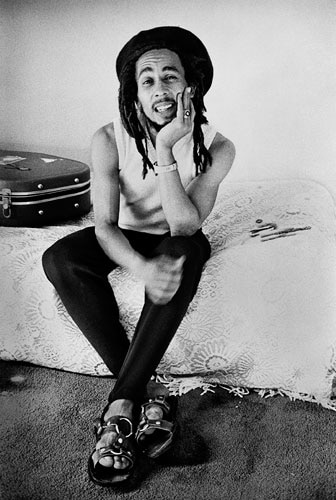
Bob Marley 1979 photo in London.
photo by Dennis Morris
Thanks to all for your contributions to Blog. Contributing Editor –Donna JS


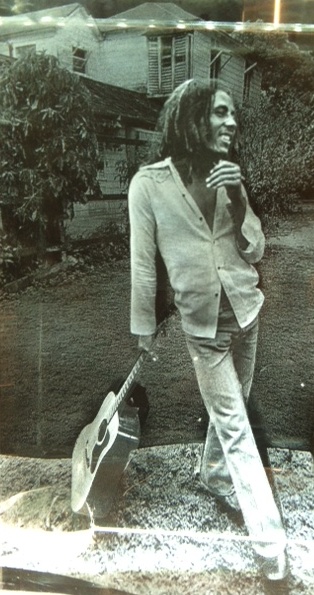
The best ever!! RIP